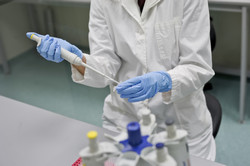How rapid TB testing could revolutionise global healthcare
Tuberculosis – or TB – is an infectious disease that spreads through the air and globally results in one death every 24 seconds. In 2013 there were between 1.3 and 1.5 million associated fatalities, mostly in developing countries. However, TB disease rates in some parts of London have been found to be as high as in Sub-Saharan Africa, with drug-resistant strains becoming increasingly common. The prevalence of drug-resistant strains has placed enormous pressure on health professionals to achieve quicker diagnoses and provide more targeted treatments to individual patients. Scientists, working together as part of the EU-funded PATHSEEK project, believe they have achieved a key breakthrough in this regard. This breakthrough is based on whole genome sequencing, which provides a sort of ‘print out’ of a patient’s complete genetic code. This method enables medical staff to pinpoint drug resistant mutations of TB, and from this, offer more effective personalised treatments. A key obstacle however has been the fact that genome sequencing can take weeks. DNA samples need to be grown in the laboratory before there is enough genetic material to measure. What the PATHSEEK scientists have done is to find a way of dramatically speeding up this method. This involves extracting mucus samples and using probes made of ribonucleic acid (RNA) molecules, engineered to bind to TB DNA. This method has been tested on 34 routine samples taken from patients in London and Lithuania, where resistant TB strains are a significant problem. The project has also developed user-friendly bioinformatics software for making quick diagnoses. Using this software, sequencing data can be analysed for drug resistance, helping to guide appropriate treatment and timely identification of outbreaks. The potential benefits are huge. Patients no longer need to wait for up to six weeks to get the right treatment and the risk of further infections is substantially lower, since quick identification of TB bacteria also allows for quick quarantine decisions to be made. PATHSEEK scientists are also confident that the new method will enable researchers to precisely track the spread of TB. Rapid sequencing will make it possible to identify highly infectious individuals – who are sometimes called ‘super-spreaders’ – thus helping health professionals to control and prevent future outbreaks of the disease. The team hopes to further refine the technique and make it cheaper for developing countries where drug-resistant TB is common. The technique has also been applied to other infections including chlamydia, HIV, hepatitis, herpes, influenza A, norovirus and cytomegalovirus. Although many infections can be treated with antimicrobials, resistance is a growing global problem. Diagnostic techniques that enable more precise treatments to be given earlier could help to combat drug resistance in a wide range of infections, not just TB. The PATHSEEK project, which runs until 31 August 2015, has been a collaborative effort led by University College London together with three other partners: Oxford Gene Technology in the UK, CLC bio in Denmark and Erasmus Medical Centre in the Netherlands. The project received a total of EUR 5.9 million in EU funding. For further information please visit: PATHSEEK https://www.ucl.ac.uk/pathseek/project
Countries
United Kingdom



